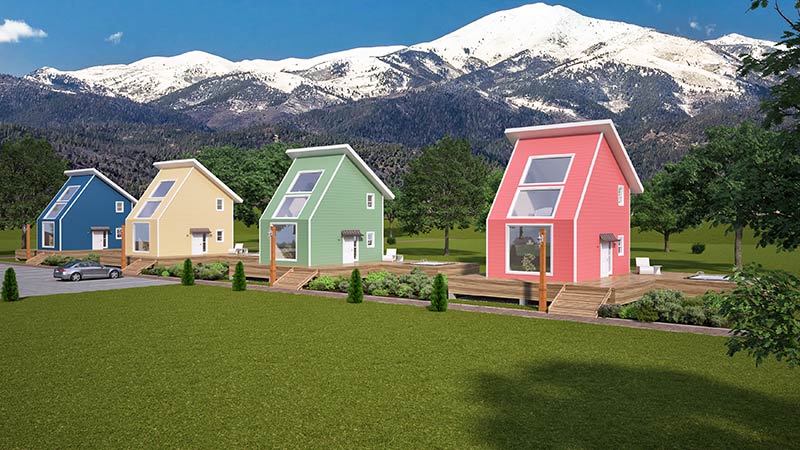Tune your television to the A&E network on any given Sunday and you are likely to stumble upon hours of Tiny House Nation. The show started humbly on the FYI network and has gained popularity with a surge of interest in the little homes affectionately called Tiny Houses.
The run up to the Tiny House Movement has been more of a slow burn than an overnight sensation. Tiny home living dates back to the 1970s, with multiple adventurers deciding to make a go of small-space life.
The vast majority of early tiny houses were set in remote areas or looked more like recreational vehicles than the modern versions we see today. The sudden change in economic status for many after the recession of 2008 is one reason for a recent increase of interest in tiny homes.
There is some debate about what constitutes a tiny house, however, the 2018 International Residential Code declares any home under 400 square feet a tiny home. A movement is certainly afoot, as tiny houses are becoming more prevalent and better recognized by municipalities across the United States.
Popularity has turned tiny homes into a trend and Fresno, California was the first to jump on board and make the movement official. In 2016, the city passed zoning laws that allow homeowners to place a tiny home on their property as a second house or rental property. Changes to local laws may be a sign of an impending surge in tiny house living.
So who is buying and building tiny houses?
When the tiny house movement started way back in the 1970s, it was primarily about living in a smaller footprint. Environmentalism was beginning to gain a niche following and people began living in small homes nestled outside the confines of “civilized” communities.
Green living has continued to be a common reasoning for those purchasing tiny homes. The small dwellings consume less power and many are built with off the grid living in mind. Solar power, reclaimed water sources, and composting toilets are all features frequently found in tiny homes purchased by environmentally conscious owners.
There is no requirement that says a tiny home has to be a sort of rustic outpost. Even the most modern iterations with all the bells and whistles provide simplified living. It is this “reduction of things” that may draw many to the tiny lifestyle.
A study by Dr. Lindsay T. Graham of the Center of Built Environment at Berkeley suggests that the enjoyment of certain living spaces may be highly dependent on the psychological makeup of residents. Thus, those who purchase tiny homes may be innately attracted to such a living arrangement.
There are certainly less philosophical reasons people choose to buy tiny homes. The ability to add separate living space is convenient for those who frequently have guests. Some build tiny homes as a new take on the in-law suite.
As municipalities continue to join Fresno in acceptance of tiny homes, we will continue to see more tiny homes built for new reasons. The possibilities are endless, as tiny houses can fill the roles of work space, office, man cave, she shed, as well as being a primary dwelling.
How do I join the Tiny House movement?
There are multiple ways to get in on the rapidly developing Tiny House movement. Builders specializing in these homes can customize any tiny house you could imagine. These builders are highly sought after and charge a premium for their services.
Do It Yourself (DIY) kits are also a popular option for someone with the space, skills, and time required to build a tiny house. It is important to keep these three factors in mind when taking on the task of a DIY tiny house kit.
It is imperative that even DIY tiny home owners commission an experienced designer. A good designer offers services that include plans, blueprints, and even 3D renderings so you can see what your tiny home will look like long before the first nail is hammered.
The Tiny House movement is here to stay. It may be time to stop calling it a movement and recognize tiny houses as just another place to call home!
3d renderings can be very useful in the process of building a tiny house. Find out more about how we can help the process of building your tiny go smoothly by getting in touch today.

Alex Smith
Manager & Co-Owner Render 3D Quick
Alex Smith is a manager and co-owner at Render3DQuick, with over 6 years’ experience project managing their large team of 3D rendering professionals. Alex is obsessed with architecture and is a CAD design specialist in his own right and an expert in the field of architectural visualization, 3D rendering, and virtual reality tours.
As the first point of contact when you get in touch with Render3DQuick, Alex loves sharing his knowledge and answering any questions you may have about architectural visualization or the latest technologies and techniques they utilize.
Connect with Alex on LinkedIn here.




